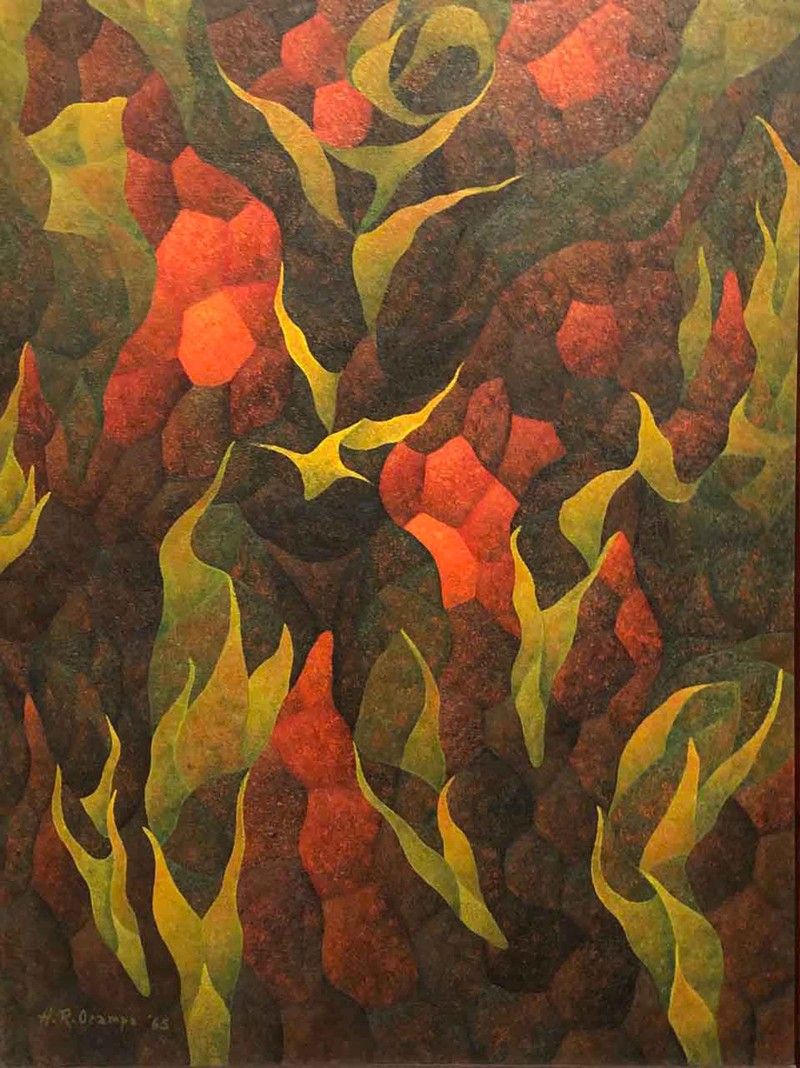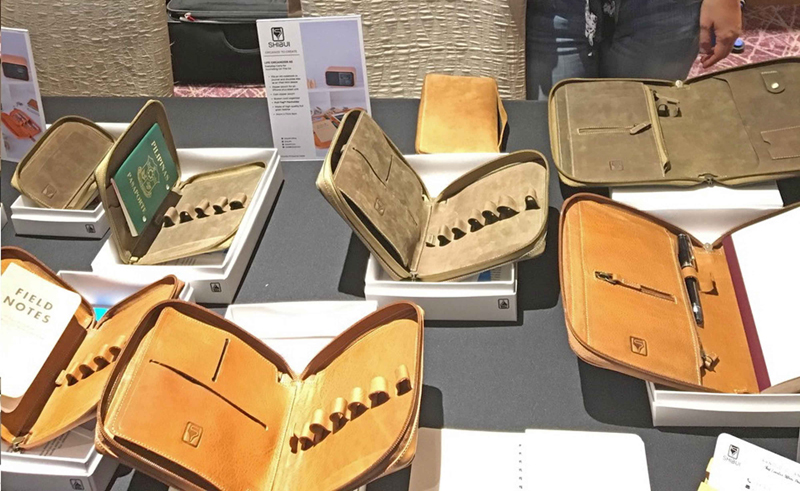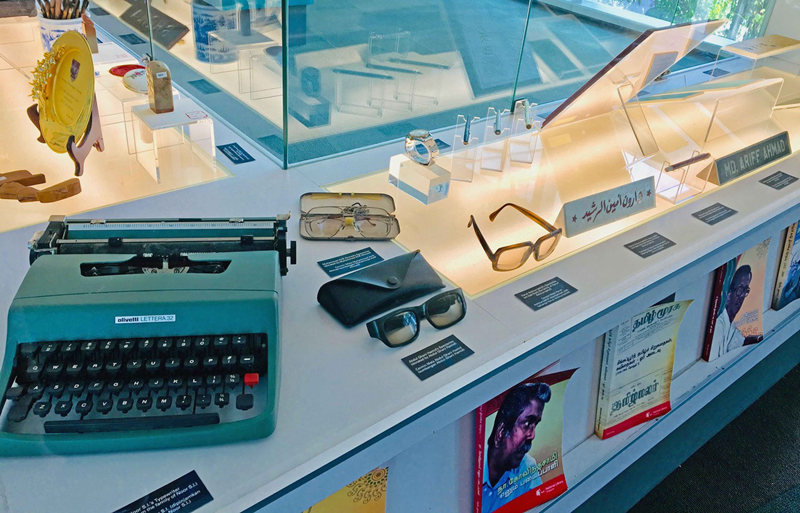Dancing mutants on a Singapore swing

I’ve been visiting Singapore nearly every year for one reason or other, usually for a conference or at least passing through Changi on my way elsewhere, but this month Beng and I decided to fly there just to have a little fun.
I did have an official excuse, sort of, for this particular swing — the 3rd Singapore Pen Show held at the Marina Mandarin on July 13, which brought together the country’s and region’s premier sellers of pens and related products. I thought I would drop by for a look-see as the “old man” of Philippine fountain pen collecting, and happily I was accompanied by a small but very knowledgeable Pinoy contingent that included adwoman and artist Leigh Reyes (who also happens to be the new president of our Fountain Pen Network-Philippines), medical executive Joseph Abueg, and avid collector Micah Robles, among others. We were all proud to see two major Filipino companies represented at the Singapore show and generating brisk sales and inquiries: Jillian Joyce Tan’s Everything Calligraphy, which was showing off its new line of Philippine-made Vinta inks, and Arnold Ang’s Shibui leather pen cases, which can easily compete in quality and design with the world’s best.
I’ve been to many other pen shows around the world, chiefly in America where they happen year-round, and while Singapore’s may be relatively smaller because newer, it also showcased Asia’s strengths as the producer of some of the world’s finest pens — the high-end Japanese Nakayas, for example, which are rarely seen in the West. Eurobox, which has a formidable collection of vintage pens, came in from Tokyo; and André Mora of the renowned Mora Stylos flew in all the way from Paris with a bevy of their coveted Oldwins. Pen shows are as much about people as they are about pens, and I was delighted to see s ome old friends like Lai Kim Hoong of Malaysia’s PenGallery, as well as make some new ones like Tan Fong Kum of Singapore’s Aesthetic Bay and Ng Lip Sing of Singapore’s Straits Pens.

Shibui’s pen cases at the Pen Show
So did I buy anything? I normally step out of pen shows with a wild man’s stare, clutching four or five precious finds in my fists, but the great thing about having too many pens is that you know when to stop and to just enjoy the scenery, which is what I did. I came to Singapore to talk pens with kindred spirits, and brought a selection of 12 of my most interesting vintage and modern pens, and had lively conversations about a few of them. Unlike our Manila Pen Show — the next one of which will take place on Nov. 16 and 17 this year — which is far busier and which features more side events like lectures and demos, Singapore’s was still more of a market than a community, and I would’ve liked a longer chat over coffee with our local counterparts, but maybe next time.
Our other objective for this Singapore trip was to visit the National Gallery, which somehow doesn’t figure on most tourist itineraries like the Marina Bay Sands or the Gardens by the Bay. Built where the old City Hall and Supreme Court stood, the National Gallery is both an imposing but also welcoming structure, with guides and docents ready to walk you through the exhibits. Aside from Singaporean art, of course, the gallery’s strength lies in its collection of Southeast Asian art, which is breathtaking in its range of styles as well as in its commonality of themes — nation, nature, people. Filipino talent is well represented throughout the exhibit — from the ground floor, where Mark Justiniani’s mind-blowing (and, for the vertiginous like me, unnerving) “Stardust” bridge obliges the visitor to take a literal walk through bottomless space, to the succession of galleries on Levels 3-5 where “Between Declarations and Dreams: Art of Southeast Asia since the 19th Century” is on show.

Writers’ memorabilia on exhibit at the National Library
A trio of less-known 1940s Amorsolos is flanked by the orchestrated chaos of a Purugganan; an early and dark Edades exudes primal energy; elsewhere are exemplary pieces by Galo Ocampo, Arturo Luz, Anita Magsaysay-Ho, Napoleon Abueva, Bobby Chabet, Ray Albano, Santy Bose, and Imelda Cajipe. But the piece de resistance of Filipino modernist representation is H. R. Ocampo’s Dancing Mutants, encountering which made our whole Singapore trip worth it. And the curators themselves must have been aware of the specialness of this stunning work from 1965, according it its very own corner in the gallery, almost altar-like. I’ve seen many Ocampos (with Beng restoring quite a few of them), but this one made me want to fall on my knees in praise of its creator.
And purely by serendipity, when we stepped out of a mobile-phone shop on North Bridge Road, I noticed that the building across the street was none other than the National Library, which I’d visited as a journalist on a previous assignment. Let’s go in, I told Beng, I want to show you something. So we did, and there on the 11th floor was a permanent exhibit on “Singapore’s Literary Pioneers” — featuring not only the books of the country’s best writers, but also their pens, typewriters, and even their eyeglasses. This, I told Beng wishfully, is how writers should be revered. Always better than a pen show is seeing what comes out of those pens, at their very finest.
* * *
Email me at jose@dalisay.ph and visit my blog at www.penmanila.ph.



















